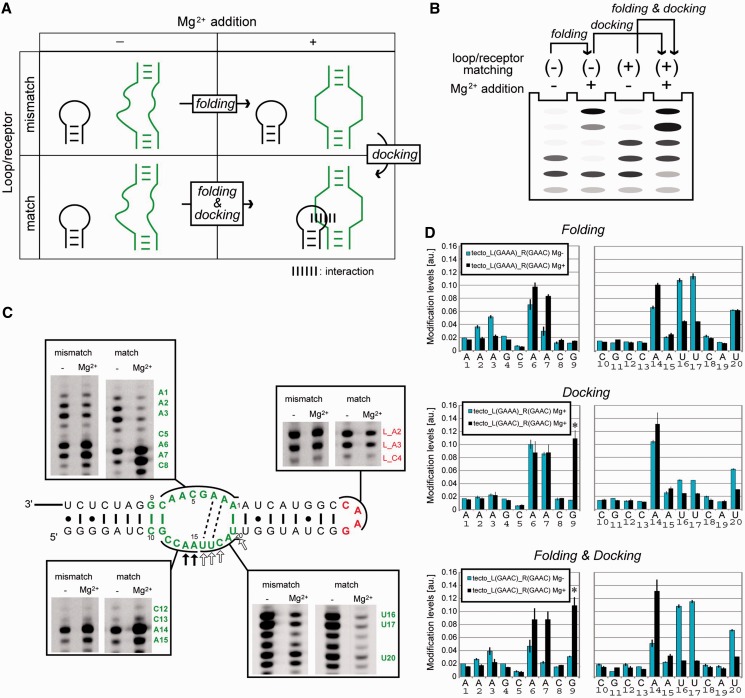Figure 6.
Chemical modification of the tectoRNA. (A and B) Scheme (A) and experimental conditions (B) used to show the effects of docking, folding and both. Loop/receptor matching (+) or (–) indicate whether the combination of loop and receptor is appropriate (+) or not (–). (C) Representatives of PAGE gel images of reverse-transcription of modified RNA. The box on the bottom right shows gel for CMCT experiments, and the others for DMS. Dashed lines indicate possible WC-base pairs in the Mg2+-dependent pre-organized structure. In the presence of Mg2+ ions, positions indicated with open and filled arrows exhibited stronger protection and modification respectively in the matched pair than in the mismatched pair. (D) Bar graph representation of relative modification intensity quantified and calculated from raw data (C). Asterisks denote Mg2+-dependent but CMCT-independent stops at G9. The intensities at A and C nucleotides were obtained from DMS modification experiment, and G and U from CMCT modification. Upper, middle and bottom graphs represent the effect of docking, folding and both, against chemical modification in the receptor embedded in tectoRNA.

